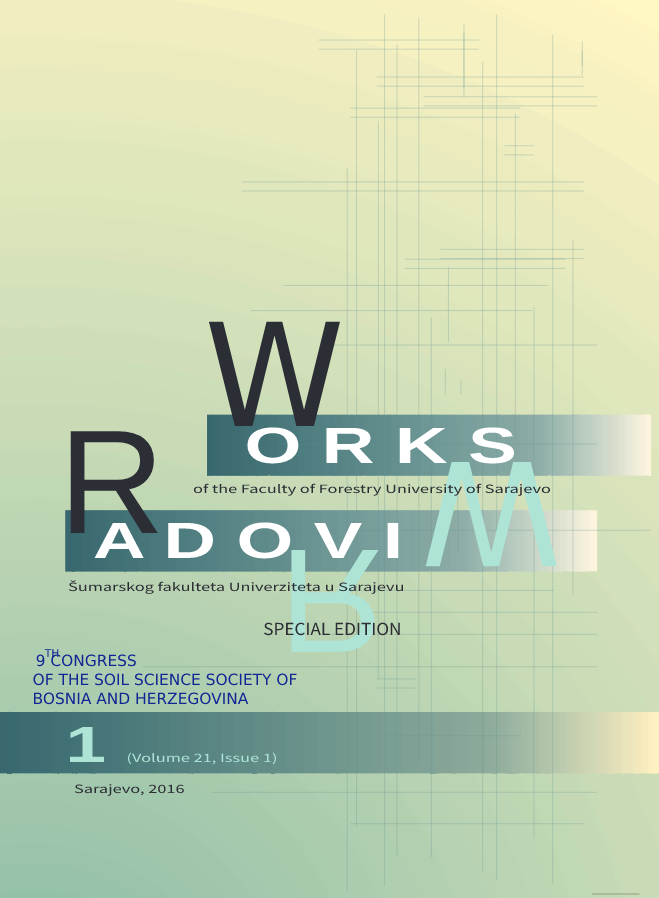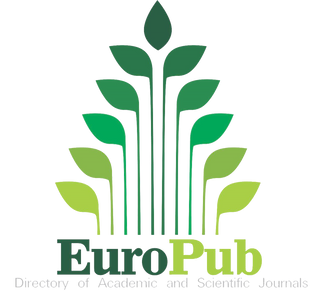WHOLE FARM NITROGEN BALANCE ON POULTRY FARMS IN CENTRAL BOSNIA REGION
DOI:
https://doi.org/10.54652/rsf.2016.v1.i1.298Ključne riječi:
whole farm nitrogen balance, broiler farmsSažetak
UDK 636.2:66.074.32(497.6)
At livestock farms most part of nitrogen arrives as purchased products (fertilizer, animal feed and purchased animals). Within the boundaries of the farm, nitrogen recycles between the livestock and crop components. Finally, nitrogen exit a livestock operation unit preferably as managed outputs (meat, crops and manure) sold off the farm. Difference between the inputs and the managed outputs represents an itrogen balance that can be an indicator of environmentally sustainable production. Nitrogen (im)balance consider only amount of the nutrient that cross the border of the farm. In ideal conditions the nitrogen input/output ratio should be 1:1. Some nitrogen exits the farm as losses to the environment (nitrates in groundwater, ammonia volatilized into the atmosphere, and nitrogen into groundwater and surface water).
A study was conducted on five small poultry farm in order to determine whole farm nitrogen balance as difference between total nitrogen inputs (one day chickens, litter, animal feed) and outputs (meat, dead animals and manure). Selected farms differ according to capacity (ranging from 5,000 to 40,000 birds), producers of poultry feed, type and length of manure storage as well as other sensible farming practice which could influence on nitrogen balance.
Collection of data on all farms is done using a questionnaire. Nitrogen content in all substrates (feed, manure, litter) was determinate by Kjeldahl procedure. The results of the whole farm nitrogen balance with the recommendations of its balancing in order to reduce the negative environmental implications are presented in the paper.
Downloads
References
Alvarenga, R.R., P.B. Rodrigues, M.G. Zangeronimo, L. Makiyama, E.C. Oliveira,
R.T.F. Freitas, R.R. Lima, and V.M.P, Bernardino. 2013. Validation of Prediction Equations to Estimate the Energy Values of Feedstuffs for Broilers: Performance and Carcass Yield, Asian-Australas Journal of Animal Science, 26(10): 1474- 1483.
Chastain, J.P., J.J. Camberato, and P. Skewes. 2003. Poultry Manure Production and Nutrient Content. Clemson University Extension, South Carolina Confined Animal Manure Managers Certification Program: Poultry, Clemson, SC.
Cobb 500. Broiler Performance and Nutrition Supplement. www.cobb-vantress.com Accessed: November 2015.
Domaćinović, M., Z. Antunović, E. Džomba, A. Opačak, M. Baban, and S. Mužic. 2015. Specijalna hranidba domaćih životinja. Hranidba peradi. p.p. 442. ISBN 978-953- 7871-44-4.
Lavergne,T., R.E. Sheffield, B.D. LeBlanc, and K.E. Nix. 2011. Poultry Environmental Best Management Practices (BMPs). Louisiana State University Agricultural Center. Pub. 2806 (online only) Rev. 04/11.
National Research Council (NRC). 1994. Nutrient Requirements of Poultry: Ninth Revised Edition, Subcommittee on Poultry Nutrition, National Academy Press Washington, D.C. 1994.
Powers, W. and R. Angel. 2008. A Review of the Capacity for Nutritional Strategies to Address Enviromental Challenges in Production. Poultry Science 87: 1929- 1938.doi:10.3382/ps.2008-00090
Strakova, E., P. Suchy, P. Navratil, T. Karel, and I. Herzig. 2015. Comparison of the content of crude protein and amino acids in the whole bodies of cocks and hens of Ross 308 and Cobb 500 hybrids at the end of fattening. Czech J. Anim. Sci., 60.(2):67-74.
Sutton, A. and Ch. H. Lander. 2003. Effects of Diet and Feeding Managemen on Nutrient Content of Manure Nutrient Management Technical Note No. 1. USDA. Natural resource conservation service.
Von Bobrutzki, K., C. Ammon, W. Berg, and M. Fiedler. 2013. Quantification of nitrogen balance components in a commercial broiler barn. Czech J. Anim. Sci., 58, 2013 (12) 566-577.























